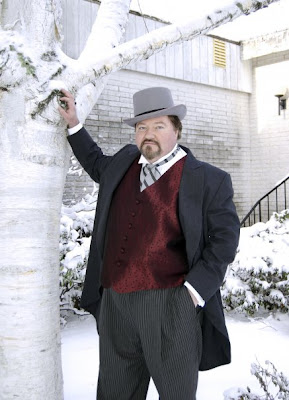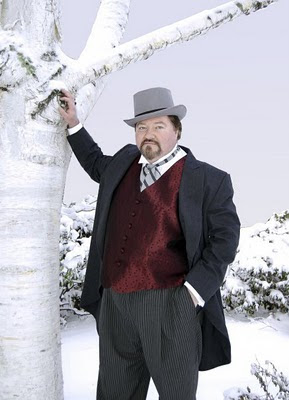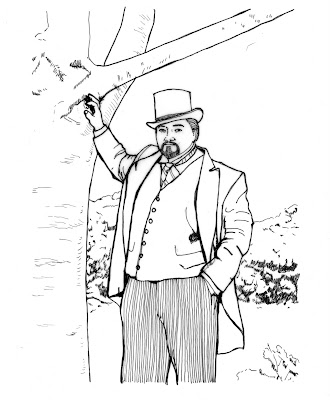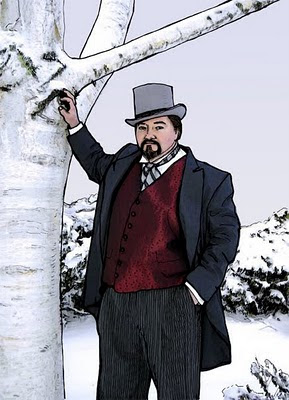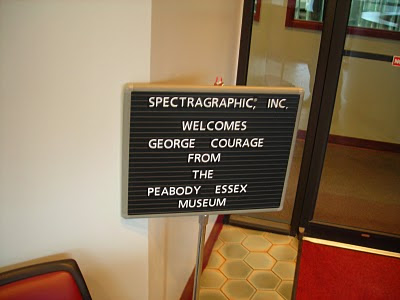
As many of you know, I am obsessed with mermaids, and mermaid movies. Since there is a definite scarcity of
good mermaid movies, (the abysmal adaptation of
Aquamarine being one example of
not good) I feel compelled to call attention to a good one when I come across it.
When the movie is an older, British-made, black and white gem, even more.
Which brings me to
Miranda.

Miranda was made in 1948, directed by Ken Annakin, who also directed
Swiss Family Robinson, the madcap comedy
Those Magnificent Men in Their Flying Machines and the World War II epic
The Longest Day. It is based on a successful stage play by Peter Blackmore, who adapted it for the screenplay.
I have had a soft spot for this story since my high school drama class did a production of the play, which I saw and read. I loved it and was obsessed with seeing the film version, however I was never able to as it is rarely on TV and there are no official DVD versions available in the US, unless you find a DVD-R copy (usually recorded off of a broadcast such at Turner Classic Movies) or can find it online. As it so happens, after much searching, I found it online, so after 30 years I was finally able to see the film. I must say it was worth the wait.

The plot goes something like this...With his wife uninterested in fishing, Dr. Paul Martin (Griffith Jones) goes on holiday to the Cornwall coast by himself. While there fishing, he snags Miranda (Glynis Johns), a real mermaid, and is pulled into the water. He's knocked unconscious, and awakens in her cave. Their first exchange is one of my favorites and sets the tone immediately. When he asks how he got there, she tells him that he "Fell out of his boat"
"Pulled is more like it" he replies.
Without missing a beat she quips "You're a terrible swimmer".
She keeps him prisoner in her underwater cavern and only lets him go after he agrees to show her London. She has always wanted to see Buckingham Palace, Billingsgate Market and most especially, the opera. He disguises her as an invalid patient in a wheelchair and takes her to his home for a month-long stay.

Martin’s wife Clare (Googie Withers) reluctantly agrees to the arrangement, but once she learns that the "patient" is an attractive young woman rather than an elderly one, convinces him to hire someone to look after their guest. He selects Nurse Carey (Margaret Rutherford) for her eccentric nature and takes her into his confidence. To Paul's relief, Carey is delighted to be working for a mermaid.
Miranda’s seductive nature earns her the admiration of not only Paul, but also his chauffeur Charles (David Tomlinson) and Nigel (John McCallum), the fiancé of Clare's friend and neighbour Isobel (Sonia Holm), arousing the jealousy of the women in their lives. Nigel breaks off his engagement, but when he and Charles discover that Miranda has been flirting with both of them, they come to their senses.
Clare finally figures out what sort of creature Miranda really is. Miranda overhears her telling Paul that the public must be told. Since Miranda had a mermaid aunt who was captured and pickled, she wheels herself down to the river and makes her escape.
The movie moves along at a rather brisk pace. Some movies like this spoil themselves by going on too long, if anything this one, at 80 minutes, is too short.
The film's chief asset is its casting. Glynis Johns is simply wonderful as Miranda, and she's a good part of the reason the film succeeds. She later became immortalized in film by playing the mother in
Mary Poppins, along with David Tomlinson. She's a joy to watch here, but she's hardly the only one. The film makes excellent use of Googie Withers, as Paul's haughty wife Clare, David Tomlinson as his glum chauffeur, by the chauffeur's girlfriend Betty, also the maid, played by Yvonne Owen, and, especially, Margaret Rutherford as Miranda's eccentric and devoted nurse.
Having been based on a stage play, the film sometimes seems in some ways oddly constrained. Surprisingly little goes into exploiting the story's potential for visual comedy, nor into showing how Miranda fares outside of domestic interiors. For this we get only two short sequences: one in which she gorges on a street-vendor's entire stock of cockles, and the great scene in which she catches a fish in her mouth during feeding time at the zoo. This curious reticence may in part have been dictated by the limiting nature of Johns' prosthetics, though what little we see of her tail (made by Dunlop, according the credits) looks entirely convincing. However, I think this constraint actually adds to its charm. One can only imagine how this could be mucked-up in an American, CGI-laden remake.

Another surprise is the mild, but nevertheless stunning raciness of the film. Miranda is an outrageously flirtatious, nearly-nymphomaniac mermaid, very open about her attraction to men, who likes being kissed, carried and admired. When Clare ponders Miranda's various eccentricities - she sleeps in a cold bath, drinks salt water, eats raw fish sandwiches, the most horrifying is, "she never wears panties!" There is also a scene in which, while out for a night-time drive in the county, Paul and Miranda come across a lake, and take an impromptu, and apparently nude swim. There is also the matter of the final scene of the movie, where, Miranda
is shown on a rock, holding a little merboy on her lap. Where did he come from?
(My guess is from the night-time swim with Paul). Although exceedingly mild by today's standards, this seems incredible in a movie made in 1948!

While watching the film, I couldn't help making the inevitable comparisons with the movies
Mr. Peabody and the Mermaid, and
Splash, (both favorites of mine) several scenes play in a very similar manner, and both try for the same light tone, but they aren't nearly as charming as this.
Miranda retains considerable charm and novelty, and was successful enough to prompt a sequel,
Mad About Men (1954).
Miranda is not a perfect film by any means, mostly due to it's short length and cheap rear projections in some outdoor scenes, but I haven't been so delighted by a film in a long time.
I am hoping that someone will give this semi-obscure gem a decent DVD release.
Is anyone at Criterion listening?
